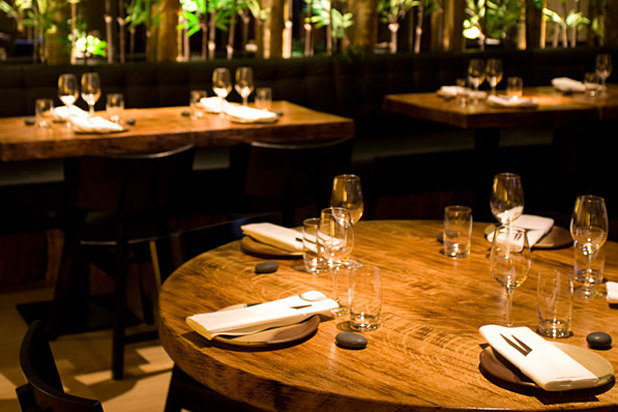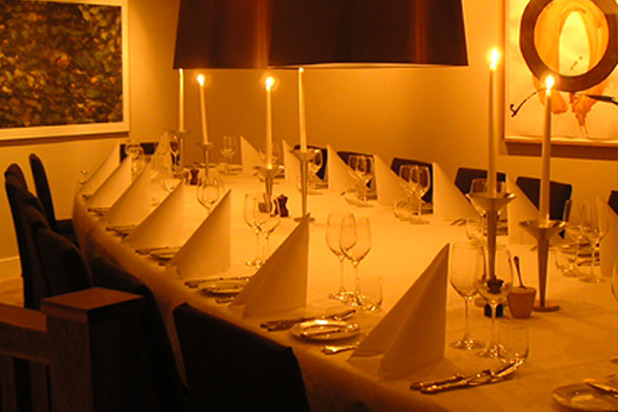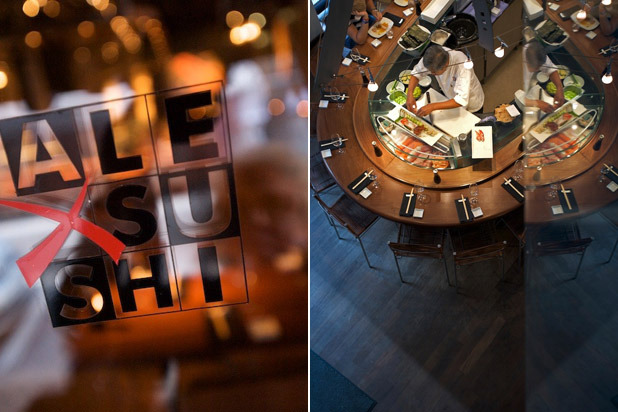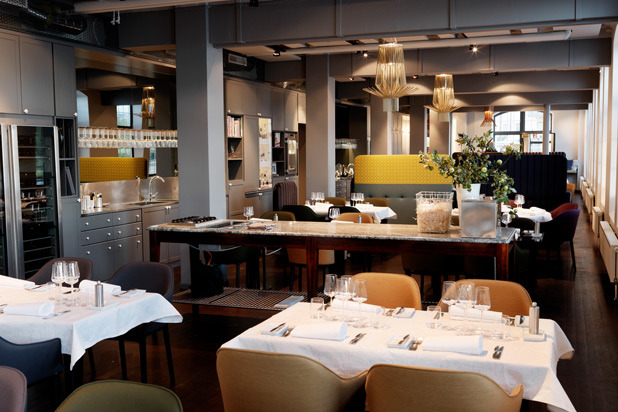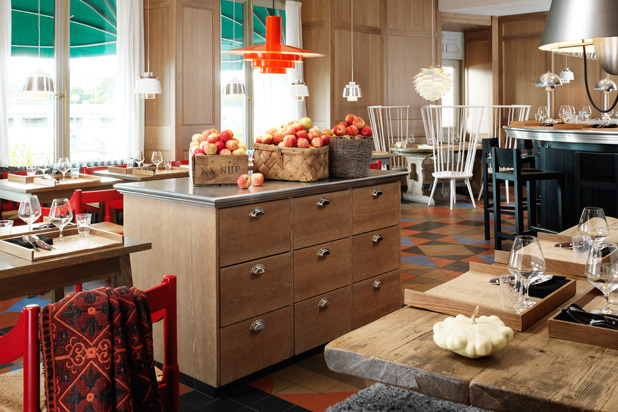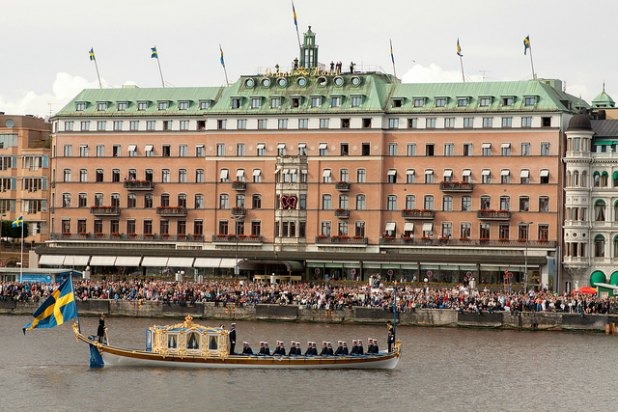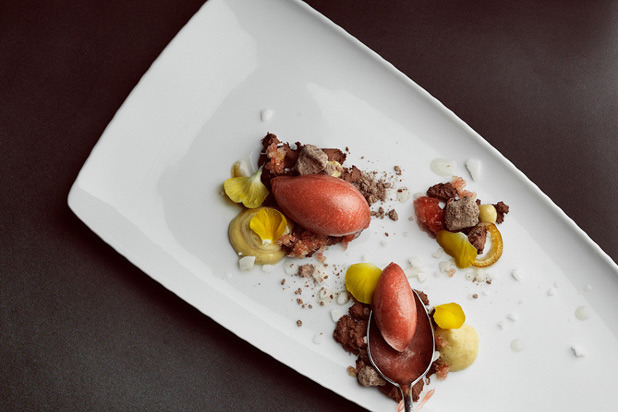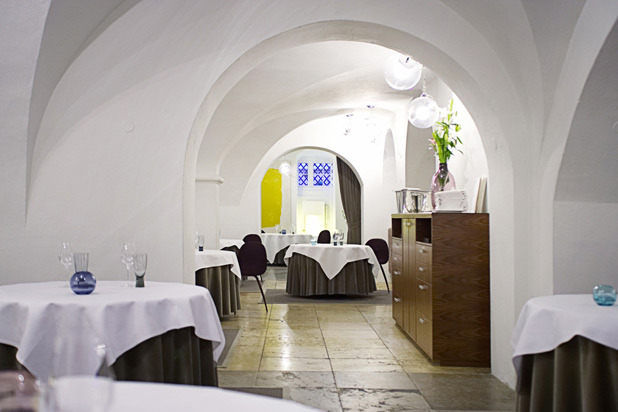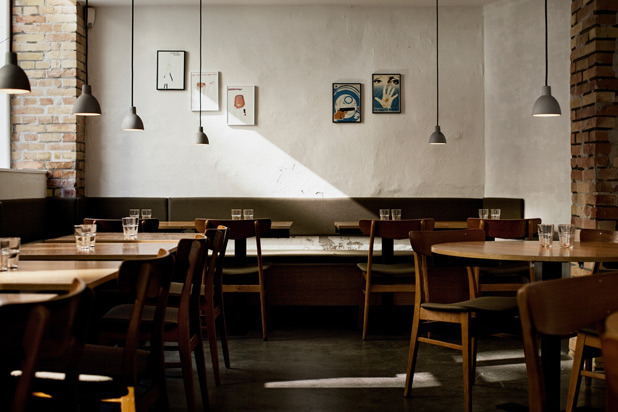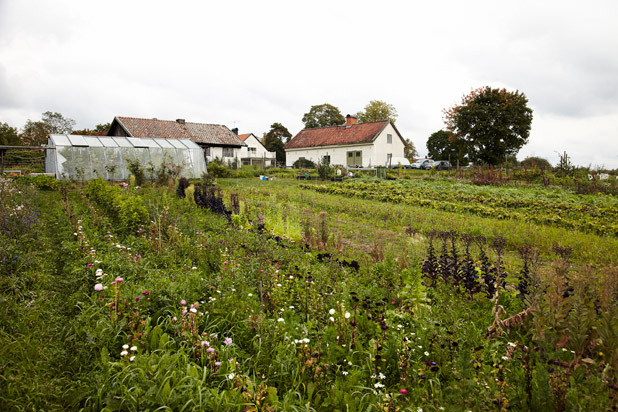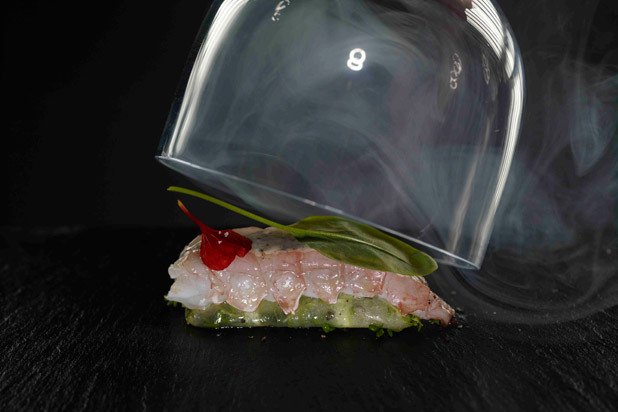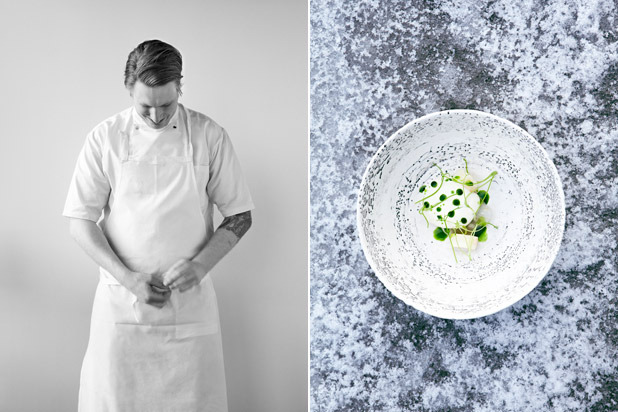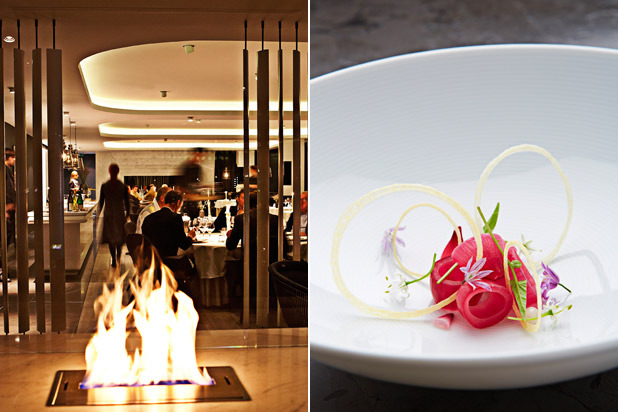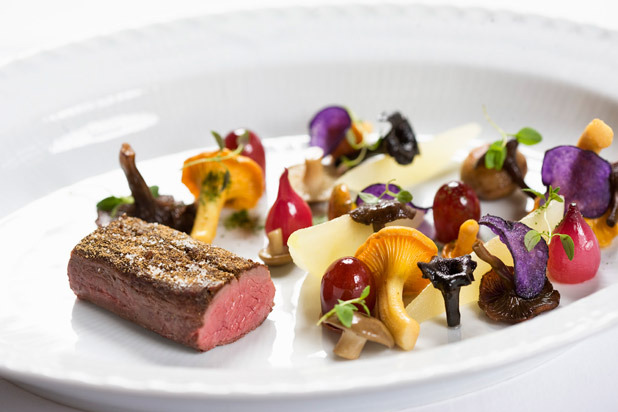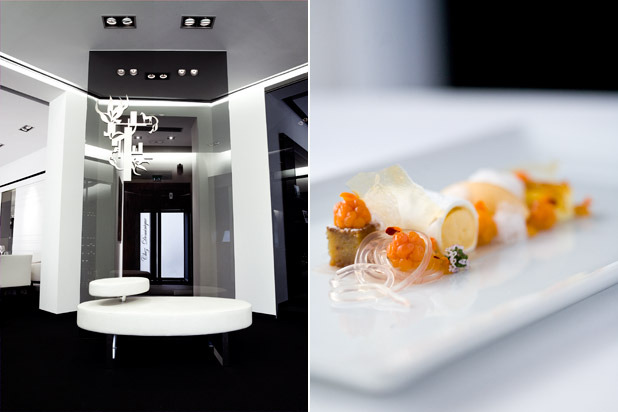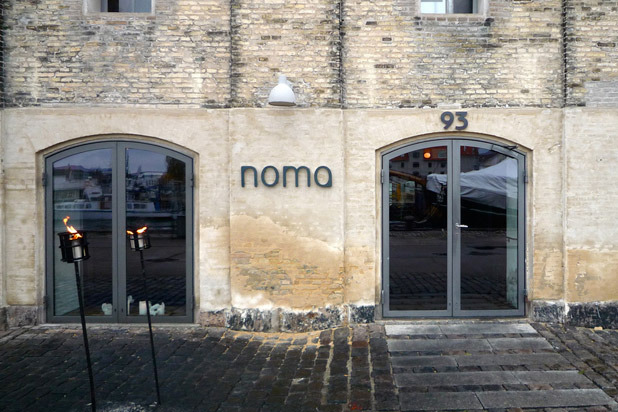20 Best Restaurants In Scandinavia Slideshow
Housed in one of the oldest buildings in the Icelandic capital, Fish Market blends Icelandic and Asian elements, from the bamboo and oak décor to the seafood creations handcrafted at the restaurant's basement-level raw bar and open kitchen (which contains Iceland's only robata grill). Chef Hrefna Rósa Jóhannsdóttir Sætran's cuisine is ambitious and well-crafted. Sample her lobster soup with roasted coconut flakes, coconut milk, mussels, and mandarin orange; smoked Icelandic pork ribs with star anise, cardamom, and homemade barbecue sauce; grilled skewered monkfish with butternut purée, corn and pepper salsa, and wasabi butter; or, from the sushi bar, the Fish Market Christmas maki roll (involving tuna, salmon, smoked Arctic char, pineapple, cream cheese, chile oil, and sesame seeds). Adventurous diners might want to sample the smoked puffin breast with fig and cumin jam.
19. Restaurant Formel B (Copenhagen, Denmark)
In 2003, only a year after chefs and co-owners Rune Jochumsen and Kristian Moller took over the kitchen at Restaurant Formel B, the duo was awarded a coveted Michelin star for their French-influenced Danish cuisine. The menu includes a rotating collection of 15 to 20 dishes like baerii (Siberian sturgeon) caviar with sour cream sorbet and crystallized white chocolate, and smoked venison with wild herbs, beets, walnuts, and yogurt.
18. Grotesk (Helsinki, Finland)
This spacious restaurant offers seating for 150 guests, but the best seats are three chef's tables steps from the kitchen, where guests at Grotesk are treated to a surprise menu curated by chef Mikko Kaukonen. Such beautifully constructed dishes as eggplant soup with braised duck and quail leg confit with poultry liver mousse and marinated cherries are mesmerizing. Those who plan ahead can learn how to make Kaukonen's top dishes by booking one of his cooking classes held at the restaurant; each culminates with a multi-course meal.
17. 28+ (Göteborg, Sweden)
For 27 years — since long before the locavore movement swept through Sweden —28+ has served innovative cuisine comprised of locally sourced organic products. Chef Hans Borén's menu is dictated by the seasons and includes offerings like lardo-baked halibut with sage, oyster mushrooms, and mussel risotto; grilled scallops with cauliflower variations and ras el hanout; and saddle of reindeer with Jerusalem artichokes and blackberry vinaigrette.
16. Alex Sushi (Oslo, Norway)
There are not one but four omakase menus offered at this Japanese restaurant, each dictated by season and according to the inspirations of chefs Alex Cabiao and Hirzem Kuchi. While the décor is very Scandinavian, with a bright minimalist dining room crafted from steel, wood, and glass, the cuisine at Alex Sushi is distinctly Japanese with a dash of Nordic flair, drawing on the great wealth of fresh seafood available in the region. (Don't tell Greenpeace, but whale sushi with balsamic sauce is among the offerings.) There is a second branch of the restaurant elsewhere in Oslo, plus an outpost in Copenhagen.
15. Lux Stockholm (Stockholm)
Chef Henrik Norström designs his menus at Lux Stockholm based not on the four seasons, but on 16 "mini" seasons. In late autumn, for instance, lobster and crayfish dominate the menu; apples, pears, plums, Brussels sprouts, and cabbage arrive in time for Christmas feasts. Norström works with an impressive roster of local suppliers — horticulturists, fishermen, cheesemakers, dairy producers, hunters, and more. The restaurant's décor of metallic-colored walls, an exposed ceiling, and oversize cushioned chairs is just as playful and whimsical as the food — which includes things like cumin-roasted lamb with smoked bone marrow, roasted pumpkin purée, and garlic and green juniper dressing, and lightly smoked venison with peas, shiitake mushrooms, and watercress cream.
14. Mathias Dahlgren Matbaren (Stockholm)
"Fast food" in the style of Mathias Dahlgren, Sweden's best-known chef (it is said that dishes can be prepared and delivered in seven minutes). And that's not sandwiches and salads, either, but such creations as shrimp and scallops with cucumbers, chiles, and lime; pumpkin and broccoli with truffles, hazelnuts, and Parmesan; and steamed coalfish with wild mushrooms and trout roe. Dahlgren calls Matbaren a food bar (that's the literal translation of the name) rather than a restaurant, but that hasn't stopped the Michelin Guide from awarding the place a star.
13. Mathias Dahlgren Matsalen at Grand Hôtel (Stockholm)
Mathias Dahlgren's Michelin-two-starred Matsalen serves internationally inspired Swedish cuisine in a bright, modern, minimalist setting appointed with burnished wood, velvet, and brass. The seasonal menu changes daily and includes two eight-course tasting menus, which can be paired with wine, sake, beer, or other drinks, and might include such fare as salmon with whitefish roe, artichoke purée, and asparagus tips; langoustines wrapped in pork fat with lovage–pea purée; pumpkin porridge with Parmesan cheese, black truffles, and pumpkin seeds; and saddle of lamb with sweetbreads. Matbaren, an adjacent "food bar," is worth trying if you can't book a table at Matsalen.
12. Luomo (Helsinki)
Since opening in 2009, the Michelin-one-star Luomo aims to serve a globally inspired menu composed of locally sourced ingredients. Chef Jouni Toivanen offers innovative dishes prepared with classic techniques in an intimate 46-seat dining room, with picture windows and tables topped with crisp white tablecloths. Each day a seven- or eight-course menu delights the senses and the palate of the select few who can secure a reservation.
11. Geist (Copenhagen, Denmark)
Chef Bo Bech's Geist is intimate, with small tables accented with soft lighting and plenty of candles setting the stage for Bech's imaginative specialties. Bech, who worked with Alain Passard at L'Arpège in Paris and Michael Roux at Le Gavroche in London, among others, creates small bites like pot-roasted cauliflower with black truffle, avocado with almonds and caviar, vanilla ice cream with black olives and licorice, and salted wasabi cream toffee.
10. Restaurant AOC Aarø & Co. (Copenhagen, Denmark)
Head chef Ronny Emborg calls his Restaurant AOC Aarø & Co. in the historic Moltkes Palæ mansion "the sensory kitchen," as he attempts to stimulate the full range of senses with his New Nordic cuisine. Each meal served is accompanied by wines selected by sommelier Christian Aarø from the restaurant's vaulted cellar, dating from the 17th century. For the most well-rounded experience, Emborg suggests the "sensory evening," a seven- to 10-course tasting menu with dishes like skate with boiled potatoes, onion roots, and fish bouillon, and Jerusalem artichoke with sorrel and black truffle.
9. Relæ (Copenhagen, Denmark)
The unpretentious atmosphere at Relæ may seem at odds with thehigh-end gastronomic experience you'll enjoy here. With plain white walls and stark wooden tables, minus tablecloths, the dining room is simple and purposely understated; chef Christian Puglisi believes that the real focus of the evening should be the food. Puglisi's cuisine is best experienced by booking Table O, a four-seat oak table near the kitchen, where the chef and his team serve an experimental menu of 10 to 12 courses, giving a handful of diners each week the chance to see Puglisi's creative impulses, sampling dishes that may one day make it onto the main menu.
8. Fäviken Magasinet (Järpen, Sweden)
Perched in the bucolic Jämtland mountains, Fäviken Magasinet is a shining example of locavore dining. Chef Magnus Nilsson bases his seasonal menu on raw materials harvested from his on-site garden and sourced from hunting expeditions. Nilsson and his staff harvest the bulk of their products during the spring and summer and then salt, dry, jelly, pickle, and bottle the goods to keep them on hand in the kitchen through the darker winter months — and a robust annual hunting season. The result is a set menu worth the drive (the restaurant even has a few rooms available for one-night stays). While most diners book a table in the main dining room, an intimate eight-seat table in the restaurant's basement offers the chance to dine on a home-style meal composed of rare and limited ingredients, not served in the main dining room.
7. Frantzén/Lindeberg (Stockholm)
There are only 19 seats in chef Björn Frantzén's and pastry chef Daniel Lindeberg's eponymous restaurant, which has two Michelin stars and aims to provide "a gastronomic journey, led by the needs of each ingredient, and the freedom of our creativity." Depending on the night, guests can dine on langoustine tartar with melted pig's fat and marinated fennel served on a marble slab or finish off the meal with pancakes and birch-flavored ice cream. But you won't know exactly what you're getting until each course is served, as guests are only given a list of ingredients upon arrival.
6. F12 (Stockholm)
Danyel Couet serves up rare flavor combinations with his variations on international dishes at F12, located in the former cafeteria on the Royal Art Academy campus, where sunlight pours in through the vast windows anchored with large billowing curtains. During the summer, a terrace overlooking Lake Mälaren is an ideal spot for lunch or dinner. Couet's creations include pheasant breast with green juniper berries and scallops seasoned with dried pheasant eggs.
5. Maaemo (Oslo, Norway)
Chef Esben Holmboe Bang asks guests planning an evening at Maaemo to set aside an entire evening to experience his set menus. The Michelin-two-star restaurant serves a nine-course tasting menu populated with organic produce predominantly sourced from Norway. While the main ingredients like potatoes and red cabbage start out simply, the resulting presentation and flavors are complex. Samples of Bang's mastery include potato crisps with seaweed powder and pullet egg emulsion, langoustines sautéed in pine-infused butter, celeriac cooked in birch sap with celeriac purée and apples, and duck heart with kale purée and smoked cream foam.
4. Geranium (Copenhagen, Denmark)
The one-Michelin-starred Geranium strives to develop dishes that involve all senses in a way that plays off its urban surroundings, yet touches upon the natural as well. From its eighth-floor perch, the dining room offers a bird's eye view of Fælledparken, the Common Gardens in downtown Copenhagen. Chef Rasmus Kofoed serves a choice of tasting menus, including dishes based on such seafood as razor clams, turbot, oysters, and langoustines, with accompaniments like garlic, hay, seaweed, sheep's milk butter, elderberries, apple, pine needles, and even frozen herb tea.
3. Søllerød Kro (Hoite, Denmark)
Nestled within the inn of the same name, opened by this Copenhagen suburb's vicar in 1677 as a place for parishioners and passersby to stay, Søllerød Kro has become one of the region's best restaurants, awarded a Michelin star. The menu offers traditional dishes with a twist prepared by chef Christian Ebbe, for instance, smoked salmon with apple, oyster, and dill; roasted foie gras with beets and dried goose breast; and roasted turbot with celery and mushrooms.
2. Chez Dominique (Helsinki)
Chef Hans Välimäki's Chez Dominique is Finland's only Michelin-two-star restaurant. The menu is written in a spare, sometimes mysterious style: "roots in a bag," "heirloom...," "pigeon Vol. 14..." The finished dishes, though, are complex and revelatory. One of Välimäki's favorites is "Beauty of the Egg," a carefully carved eggshell enclosing layers of truffle purée, curdled egg pudding, and artichoke purée with a slice of miso-glazed pork, all decorated with light potato foam, truffle sauce, and black truffle chips.
1. Noma (Copenhagen)
René Redzepi helms "the world's best restaurant," Noma, whose name is a portmanteau elision of the phrase Nordisk mad ("Nordic food"). The story of Noma is well-known. According to the lore, at least, BN ("Before Noma") in Scandinavia, there was only a revolving door of pork, potatoes, herring, and grumpy Protestants. AN ("After Noma"), every chef in Denmark and beyond was suddenly foraging for herbs spelled with funny letters and killing moose with his bare hands. The real story is this: In 2003, Danish restaurateur Claus Meyer approached a number of chefs about opening a high-end restaurant that would highlight Nordic ingredients. Most chefs passed, except Redzepi. After having done stints at Pierre André in Copenhagen, Jardin des Sens in France, elBulli in Catalonia, and the French Laundry in California, Redzepi, then working as a sous-chef at Copenhagen's Kong Hans restaurant, formed a partnership with Meyer. Redzepi — The Daily Meal's International Chef of the Year in 2011 — has since become the poster boy for the über-locavore, foraging, and New Nordic movements. Did two Michelin stars, a TIME magazine cover, and three consecutive number ones in the San Pellegrino Top 100 Restaurant list change anything? Yes. From a kitchen staff of fewer than 10, Redzepi's team has grown to close to 40, including 20 or more stagiaires, not to mention the hoard of foragers, farmers, and fishermen supplying the restaurant. Add a completely renovated kitchen, a food laboratory, and an actual head chef beyond Redzepi, and it's a wonder that the restaurant is still in its original location. See Copenhagen-based food writer and Daily Meal special contributor Evelyn J. Kim's full story: Noma Is Still a Work in Progress.
